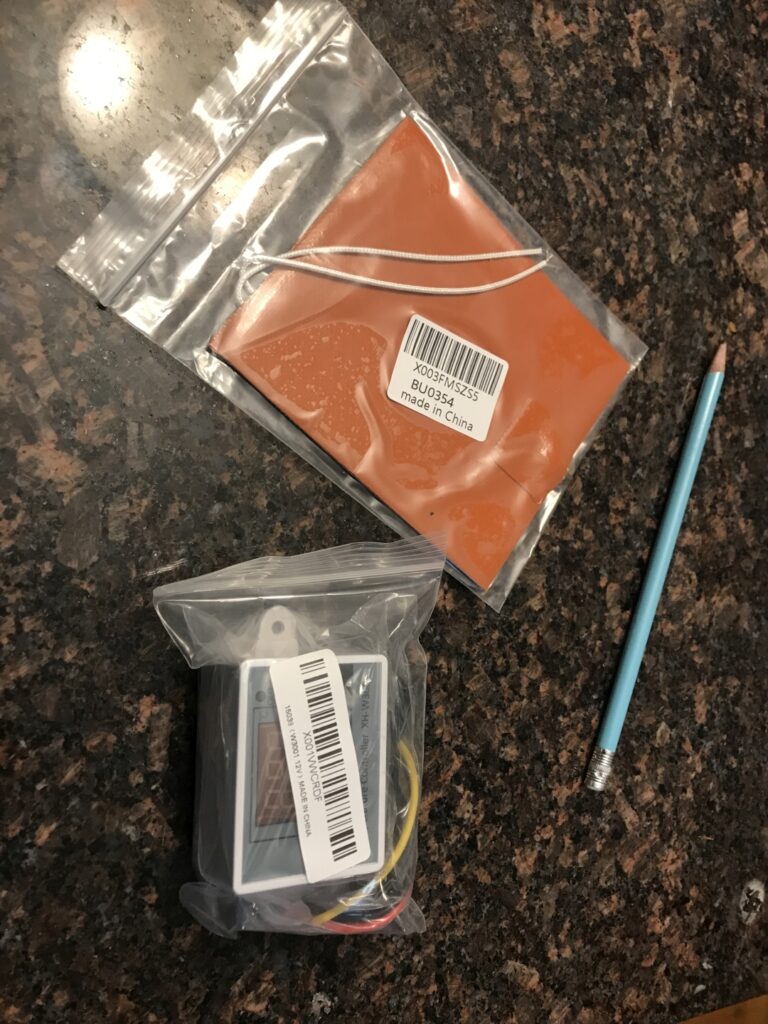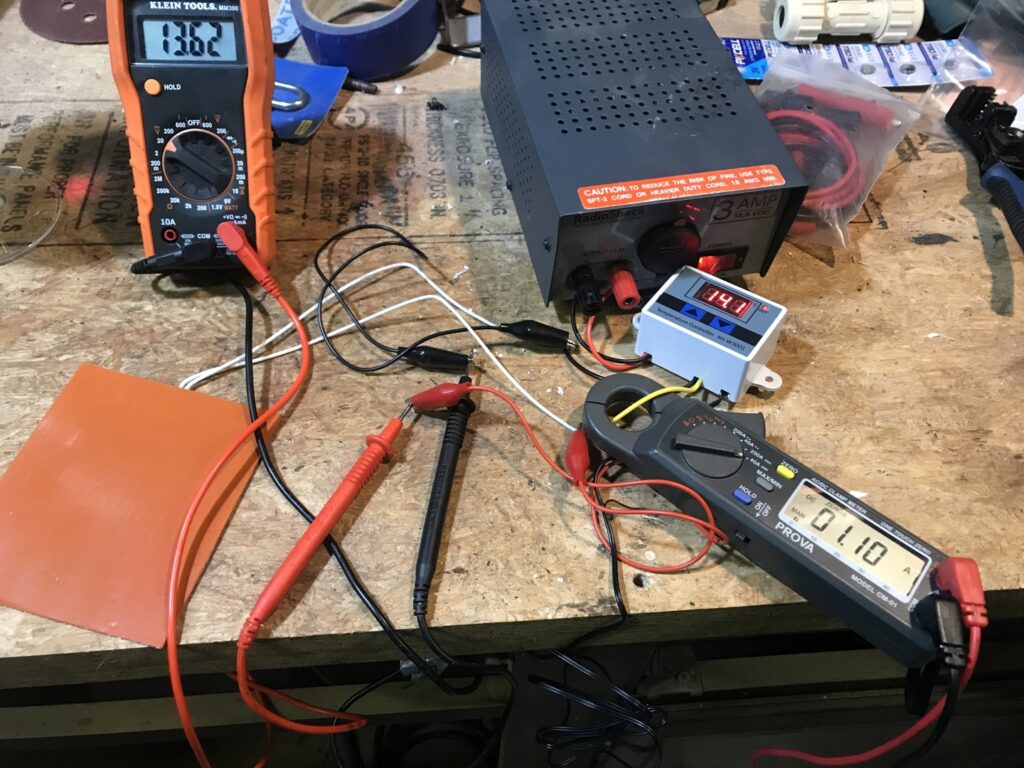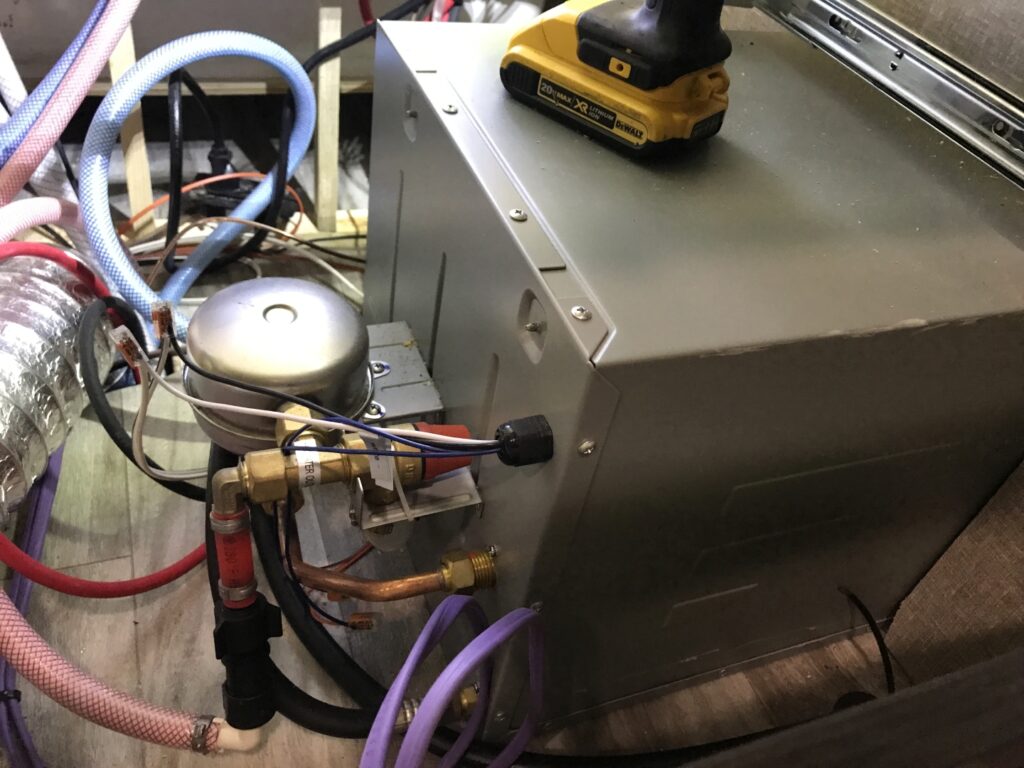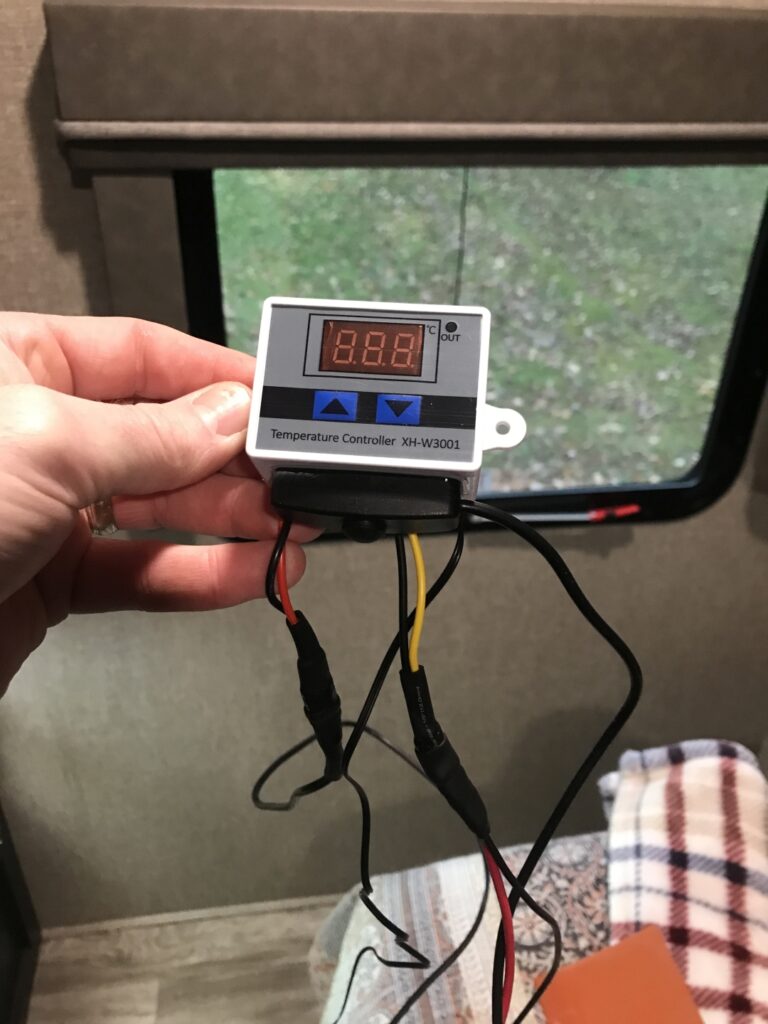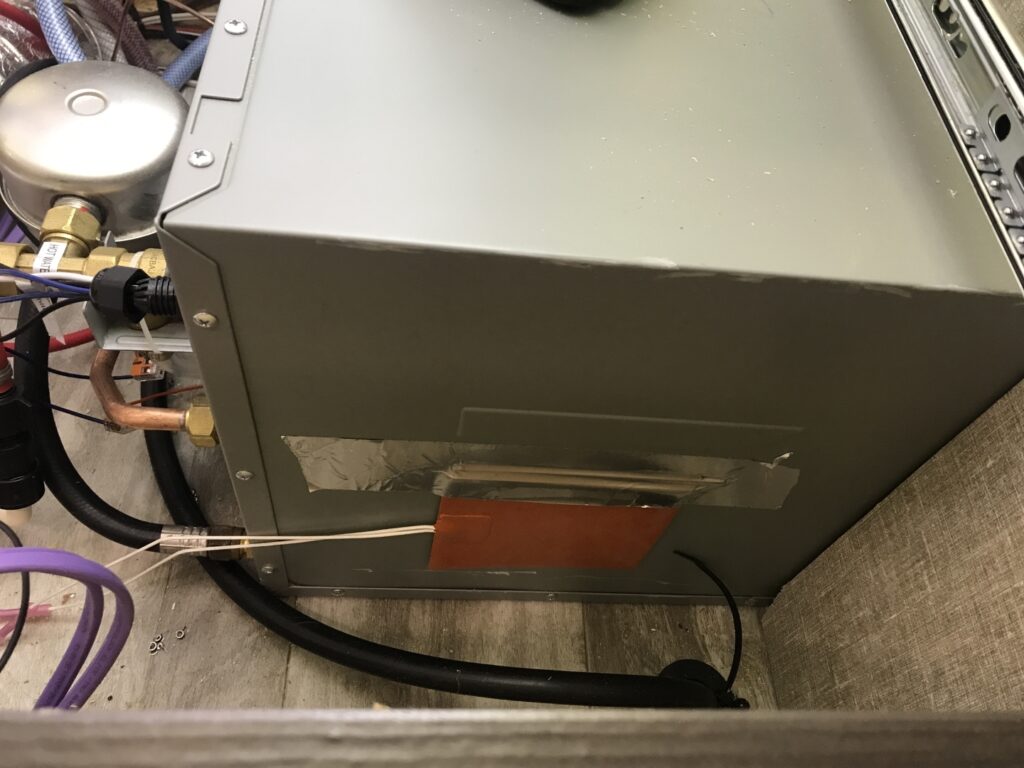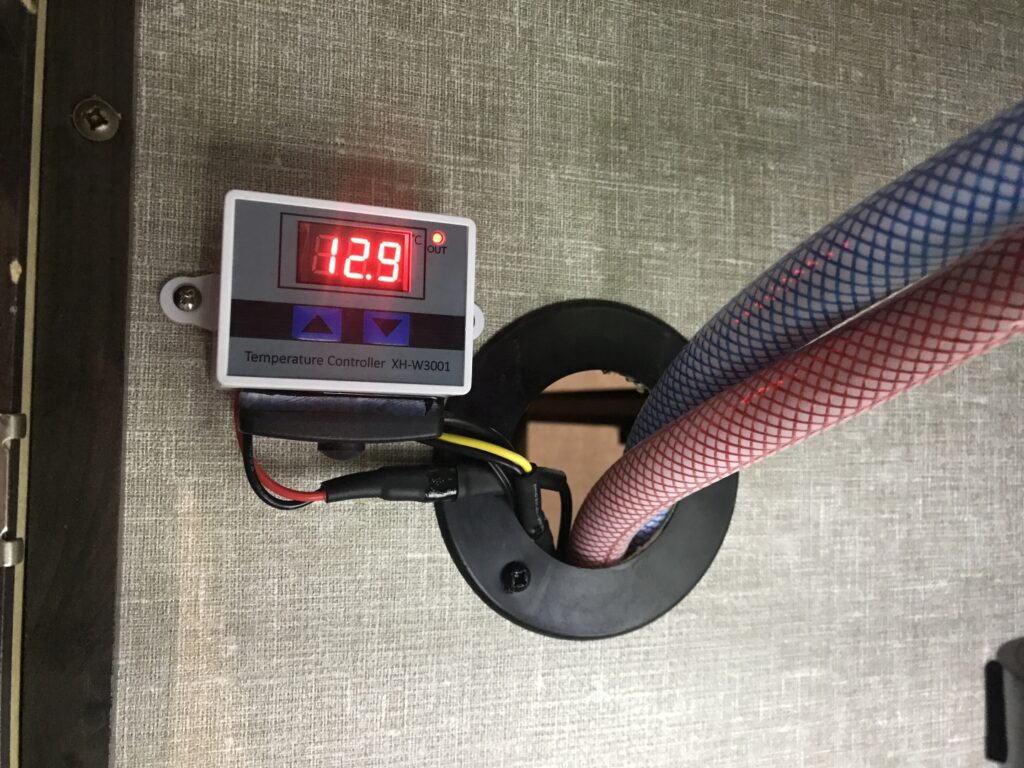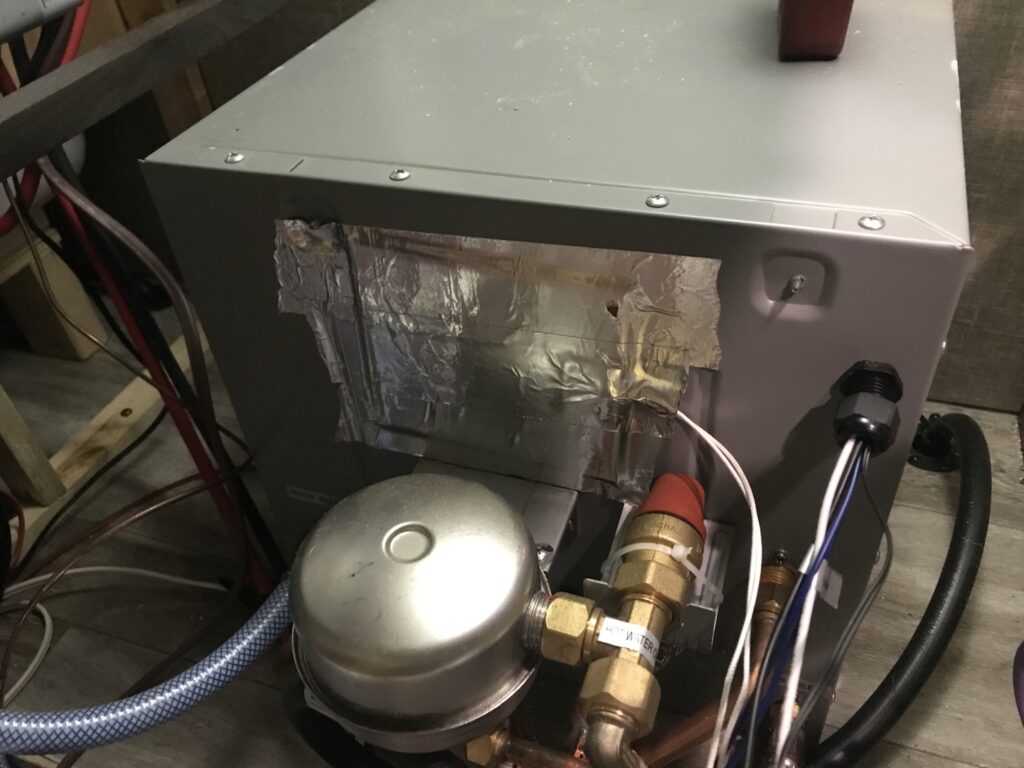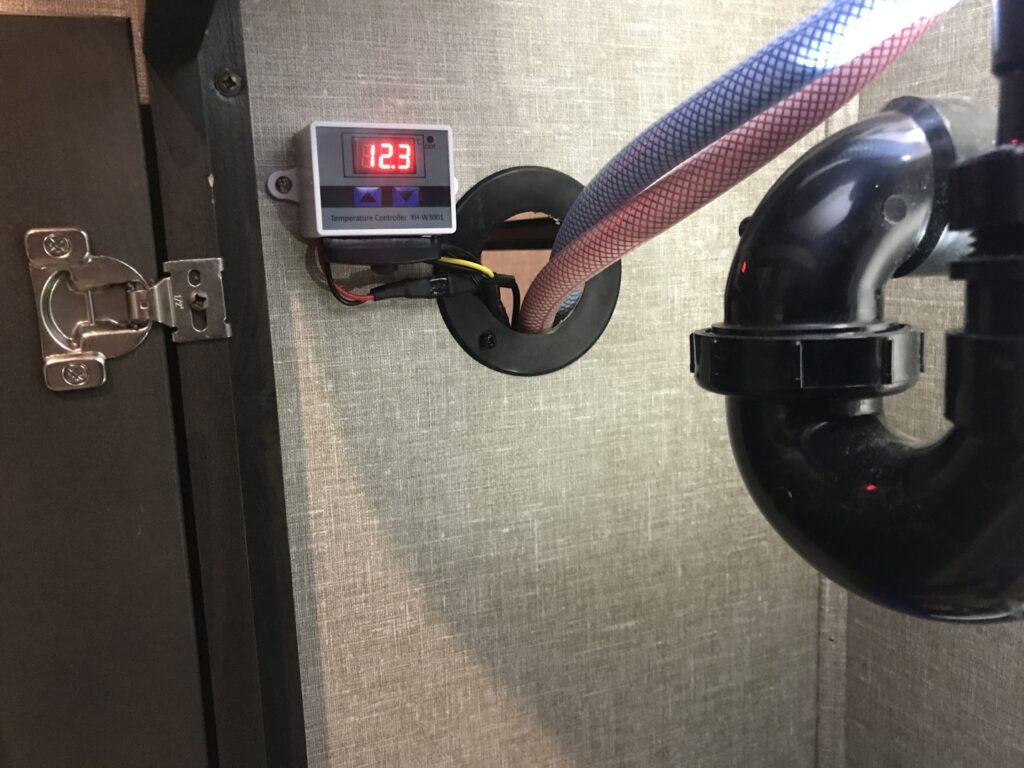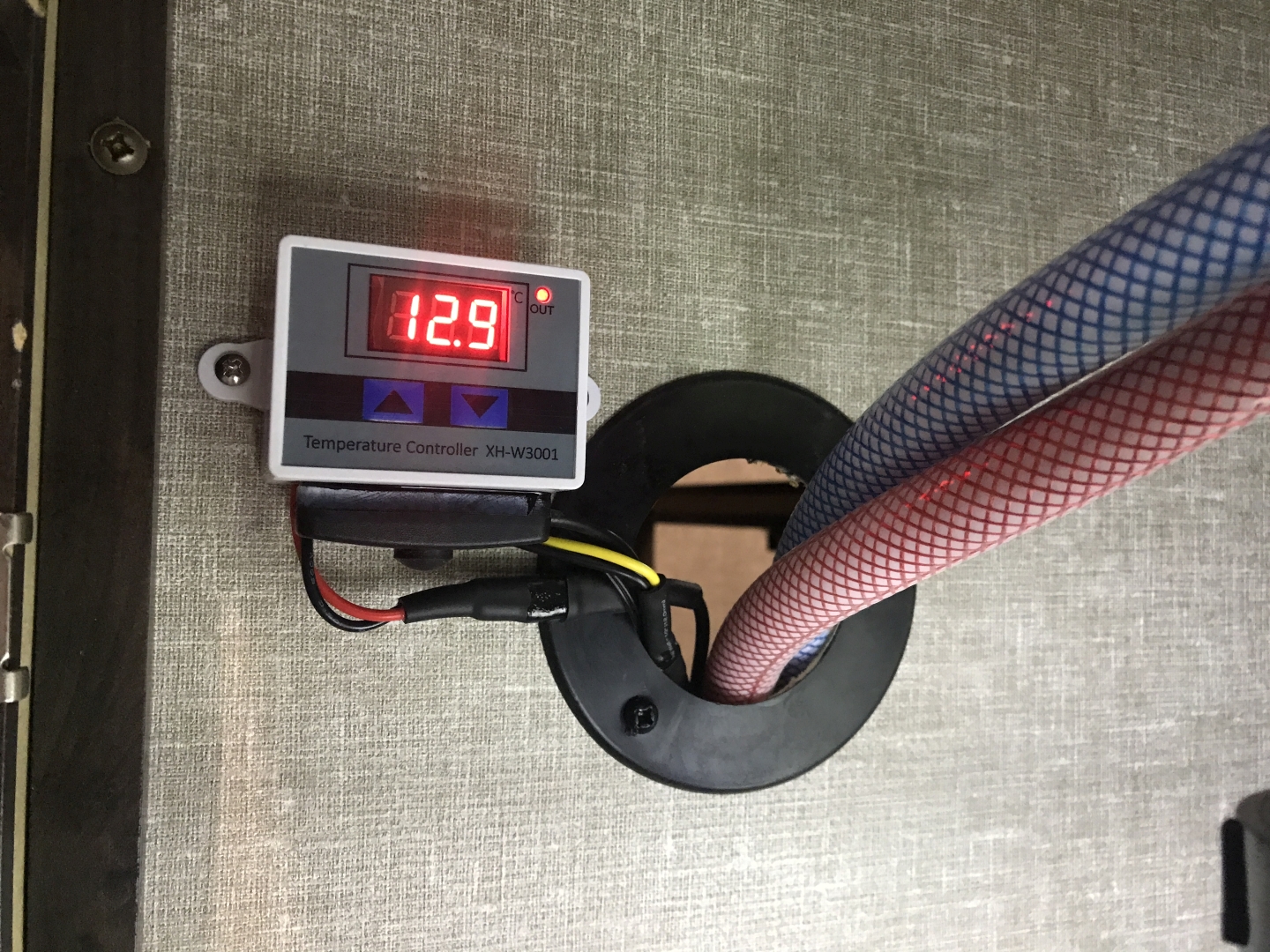That title might sound redundant… but no. Here’s the big picture: The water heater that came with Talley is an on demand propane powered heater that consists of a series of copper tubes looped through a burner. When hot water is desired, the heater detects flow, ignites the burner and heats the cold water as it passes through the loops.
Pros
- Limitless hot water so as long as there is grey water storage (or we are connected to septic) and obviously propane to heat the water
- It is only active when that water is desired (meaning its not wasting energy while hot water is not needed).
Cons
- It wastes some water when the demand for water is initiated before the heater can catch up
- It is very sensitive to freezing temperatures because of the thin loops of tubing and the fact that it doesn’t maintain a tank full of hot water which would help the entire unit avoid freezing.
It is because of that last con that I started thinking of alternate means to semi-winter proof the water heater especially early in the season before the rig is winterized and we might be squeezing in the last couple trips. This is when I came up with my cockamamie water heater heater idea.
I found a small heating pad and thermostat (with remote temp sensor) with the intent that heating pad could be affixed to the exterior of the water heater and be initiated by the thermostat when the interior of the heater drops below 40 degrees. Its not like the water heater needs to be kept warm, I just need it not to freeze.
I found some easy access to mount the thermostat under the bathroom sink with the temp sensor installed through the strain relief on the back of the water heater and dangling about 6 inches into the chamber. I found a on/off button that I glued to the underside of the thermostat, tapped into power from the water heater and added a fuse to protect the wiring of my new circuit. Finally I mounted the heating pad to the back side of the water heater case using aluminum ducting tape so the pad will conduct the heat to the interior of the water heater.
Aside from the challenge of programming the thermostat in Celsius with Chinese markings on the back, the project was straight forward and kind of fun to sort out. We’ve had a couple bursts of cold temperatures, so I think its already been doing its job… but I wish I had been able to test it after winterizing the rig in case something didn’t work as intended.
